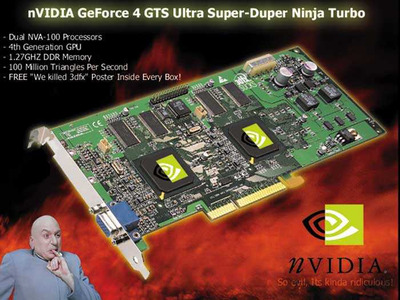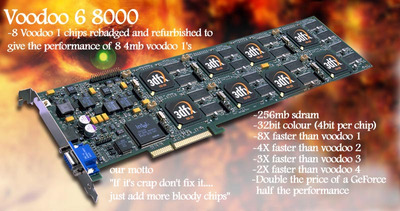I actually think 3dfx were doomed from the outset.
Their architecture gave them a massive boost early on and an easy way to scale performance.... to a point.
But to make any radical changes and add features to more fully support what were becoming the defacto 3d gaming APIs (OpenGL and direct3d) seemed to cause them far more design challenges than their competitors.
Everyone else could innovate and try different approaches, some worked (Nvidia), some didn't (tile based rendering)... but 3dfx had an architecture that just didn't lend itself to any radical change. I suspect a lot of this hinges on the fact that it was started by ex SGI employees and the design of the 3DFX is very similar to that you find on contemporary SGI graphics hardware, with discrete raster processors, transform engines and texture units.
SGI segmented their products in the same way as 3dfx did; bolting on an extra raster chip to improve fill rate, another geometry transform chip to bolster 3d calculations, and texture mapping units.
It was all a very scalable, and modular way to do things... But it also meant that if you had to fundamentally change what the hardware could do... Well you had to throw it all away. If you look at, say the difference in features between an Impact board set with texture mapping for an Indigo 2 workstation versus the top end texture mapping board in an Octane, well yeah the Octane has better fill and transform rates... but it didn't actually do anything different... It just did the same thing but faster.
Ultimately, I think they doomed themselves by not being able to adapt to a rapidly changing market. Just being 'fast' with a limited feature set (as per their original aim with glide) was no longer an option.
My collection database and technical wiki:
https://www.target-earth.net


